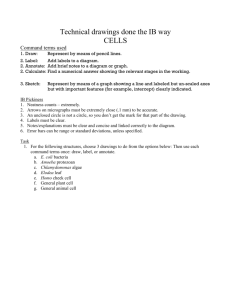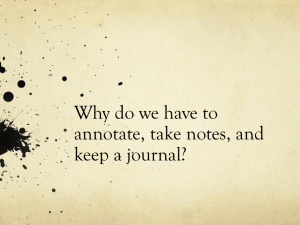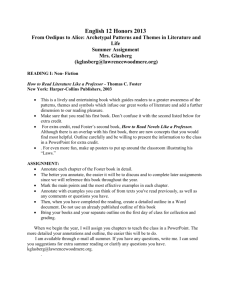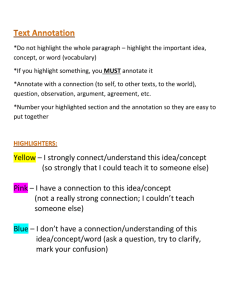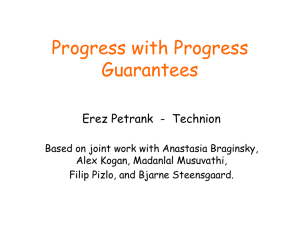Lesson 14
advertisement
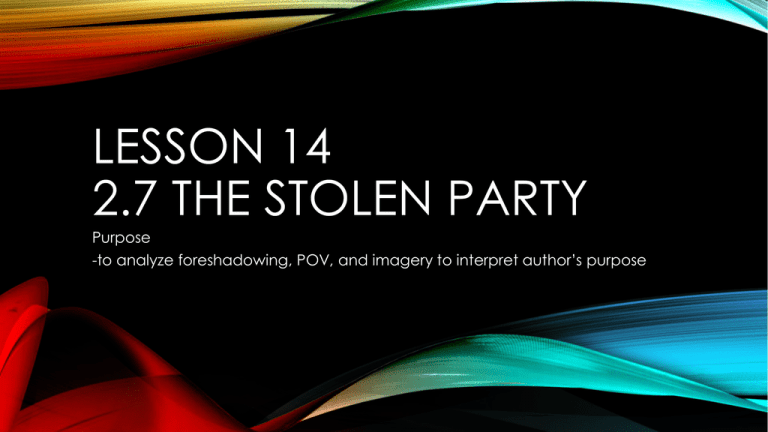
LESSON 14 2.7 THE STOLEN PARTY Purpose -to analyze foreshadowing, POV, and imagery to interpret author’s purpose BELL RINGER • Define the following on page 106 • Foreshadowing • Textual Evidence • What is the purpose of using foreshadowing in a text? • How can the POV change the story? Explain. LEVELS OF QUESTIONS • Level 1 – Literal • Level 2 – Interpretive • Level 3 – Universal • Why do we ask questions of a text? • How does asking questions help us gain a deeper understanding of a text? • Why would we annotate a text? • Are some questions better than others? Explain, give examples. THE STOLEN PARTY • We will begin reading “The Stolen Party” on page 107. As we read, you will annotate the text and ask varied levels of questions. We will stop after each chunk to discuss the text. • Chunk 1 • Stop and discuss / annotate • Chunk 2 • Stop and discuss / annotate • Chunk 3 • Stop and discuss / annotate • Chunk 4 • Stop and discuss / annotate • Chunk 5 • Stop and discuss / annotate • Chunk 6 • Write your own thoughts / discuss IMAGERY AND INTERPRETIVE STATEMENT 1. Like the images of the comb and the watch in “The Gift of the Magi,” this story has a central image that may be used symbolically. Identify the image that is introduced at the beginning, appears in the middle, and ends the story. 2. How can this image be interpreted as symbolic? • The image of __________ is a symbolic image in “The Gift of the Magi” since it represents _________________________. I know this because___________________. SIFT • After reading the story, go back and scan for examples of symbols, imagery, figurative language, and tone/theme, and complete the SIFT graphic organizer on your own sheet. Literary Element Symbol Imagery Figurative Language Tone/Theme Text Details Effects or Meanings of Details
